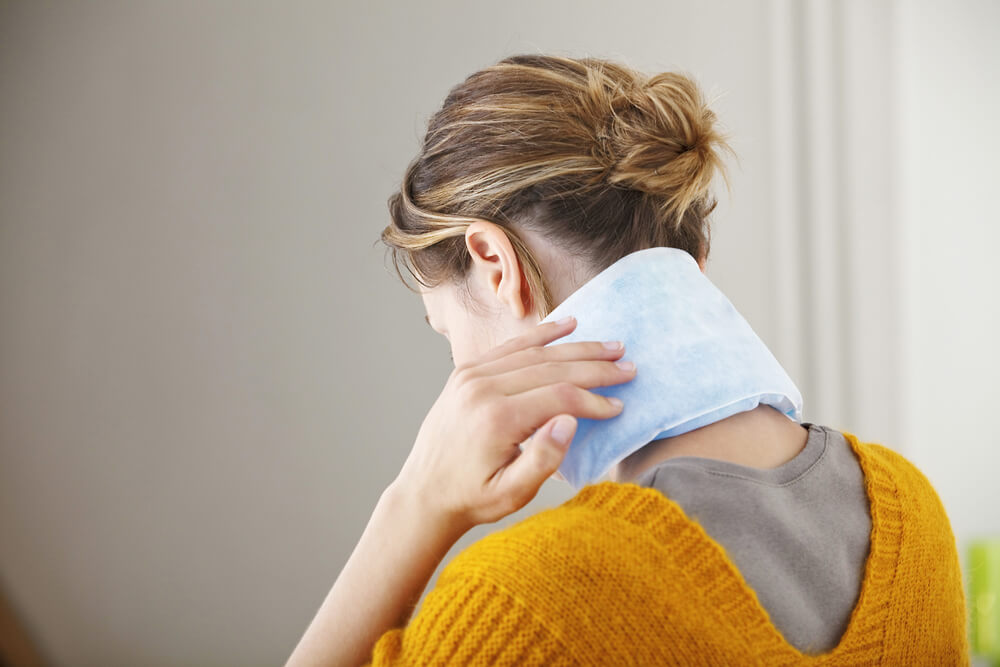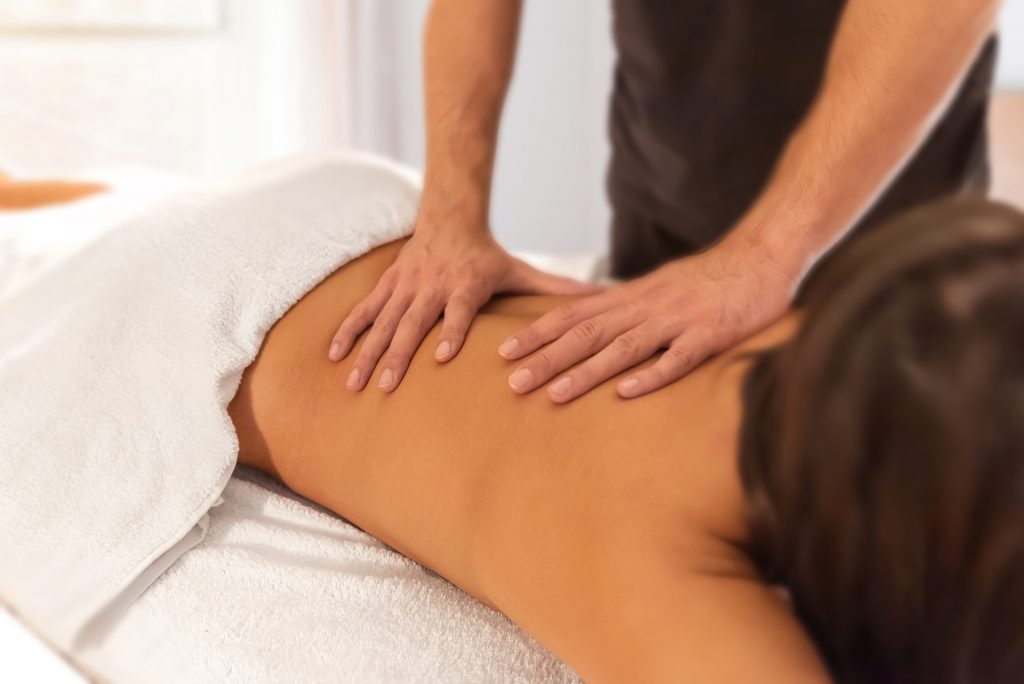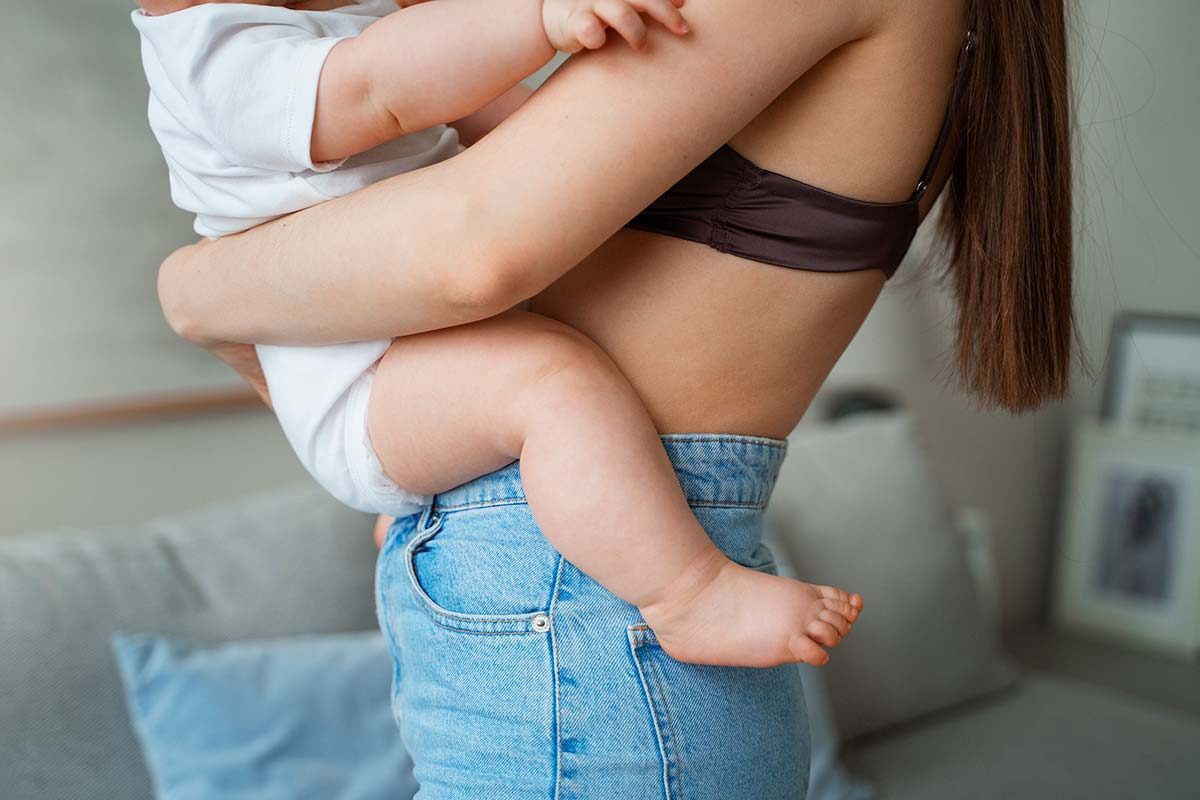Table of Contents
- Postpartum Back Pain Symptoms
- Recovery Tips to Help With Back Pain
- Tackling Postpartum Back Pain with a Combination of Treatments
Back pain after childbirth is common. The baby may have arrived, but the effects of accommodating pregnancy do not suddenly disappear after childbirth. Hormonal changes, posture adjustments made during pregnancy, carrying additional weight in the front of the body, which shifts the center of gravity, and infrequent exercising frequently lead to back pain during pregnancy. Once the baby is born, it takes some time to overcome the stress and impact of pregnancy on the body.
Postpartum Back Pain Symptoms
Postpartum back pain symptoms include persistent lower back soreness, hip and pelvic pain, neck pain, and stiffness. The pain may be aggravated by caring for the baby, from bending over a crib to carrying the infant. Back pain after childbirth is partly due to the significant amount of the hormone relaxin released during pregnancy, which loosens hip joints and ligaments in the pelvic area. The physical changes are to prepare the body for childbirth.
Caring for a newborn can also cause mental and emotional stress, which may exacerbate back pain due to increased muscle tension.
What Are Recovery Tips to Help With Back Pain?
The following are seven postpartum recovery tips to ease the new mom’s back pain.
1. Wear Support
The core muscles are stretched significantly during pregnancy. The weakened muscles stress the back muscles. A postpartum support belt or belly band is worn around the abdomen, providing support and compression to weakened core muscles. The support can increase blood flow and help with posture, which then eases back pain.
The one caution is not to wear it too tightly. It is not a girdle or waist trainer, and wearing the belt too tightly can further weaken muscles, restrict blood circulation, and impede breathing and digestion.
There are also pillows designed to support the lower back and maintain proper spinal alignment.
2. Exercise
Following an exercise plan is an important strategy for managing postpartum back pain. Safe exercises after childbirth, such as yoga, swimming, and walking, can improve back and abdominal flexibility and strength. Including Kegels or pelvic floor exercises in the routine can strengthen deep muscles that support the uterus, rectum, and bladder, which are often stretched and weakened during pregnancy and childbirth.
3. Apply Heat Therapy
The purpose behind applying heat therapy is to influence blood flow. A heating pad or warm compress can reduce muscle tension by increasing blood flow. In turn, pain is relieved. A heating pad can be applied several times a day for 15-20 minutes each application.

4. Learn Correct Lifting Techniques
Learn and use the correct lifting techniques for moms. When picking up the infant or other items, bend at the knees, not the waist. Picking up anything or anyone with the waist places stress on the back. The correct lifting techniques for picking up the baby, including the baby in a baby carrier, or any objects, are to lift from a crouching position and use leg muscles.
5. Get a Massage
A massage therapist certified in perinatal massage can provide massages tailored to the woman’s specific circumstances. There are many types of massages, from the light, soothing massage to the deeper myofascial release massage. A massage relaxes muscles, which can relieve pain and may improve postpartum hormone balance. Studies have demonstrated that massage reduces cortisol, a hormone associated with stress.

6. Maintain Correct Posture
Maintain good posture while sitting, standing, carrying the newborn, breastfeeding, feeding the baby, and engaging in other activities. The weight gain from pregnancy, combined with any additional weight gain, can lead to poor posture. Pressure is placed on the spine and surrounding muscles and ligaments. By maintaining good posture, which involves keeping the back in a natural curve and the shoulders straight, some of the lower back muscle strain is reduced.
Sleeping posture is also essential. Sleeping on one side with a pillow between the knees relieves lower back pressure.
7. Relax in Warm Baths
Finally, warm baths increase blood flow throughout the whole body, soothe sore muscles, and relax tense ones. Increased blood flow helps reduce inflammation, one of the primary causes of back pain. Relaxing in a warm bath also helps reduce stress, which in turn causes muscle tension.
These are seven suggestions for postpartum back pain relief, but there are more. For example, a doctor may suggest taking an over-the-counter pain reliever (only take them with a doctor’s approval), and women who work can make ergonomic adjustments to their work area.
Tackling Postpartum Back Pain with a Combination of Treatments
Lower back pain postpartum may be a natural result of having a baby, but in most cases, it can be improved with postpartum body care. The pain may ease within a few months after delivery, especially if following a holistic therapy plan.
Most women are pain-free within six months. If the pain persists for more than six months or other symptoms develop, such as leg weakness, it is crucial to consult a doctor.
Sources
- https://pmc.ncbi.nlm.nih.gov/articles/PMC3459115/
- https://americanpregnancy.org/healthy-pregnancy/first-year-of-life/postpartum-massage/
- https://pubmed.ncbi.nlm.nih.gov/1531555/
